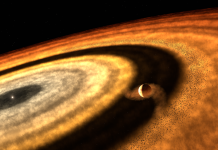Recent moves in the European Commission include the European Commission and the Government of Ukraine, which have signed a new agreement allowing Ukraine to participate in key components of the European Union Space Programme
The agreement includes Ukraine’s involvement in Copernicus, the Space Weather Events (SWE), and Near-Earth Objects (NEO) sub-components, deepening space exploration and technology ties.
This agreement works with the framework established under Chapter 8 of the EU-Ukraine Association Agreement, signed in 2014. That agreement laid the foundation for collaboration in satellite navigation, Earth observation, space science, and applied space technologies. The new deal also follows the 2018 Copernicus Cooperation Arrangement, which introduced a reciprocal Earth observation data-sharing system between Ukraine and the EU.
By joining these three components of the EU Space Programme, Ukraine is taking its first formal step toward more involvement in the EU’s space activities. This partnership is significant as it strengthens the EU-Ukraine relationship and sets Ukraine as a strategic contributor to the European space ecosystem.
Strategic benefits for Ukraine and the EU
Ukraine’s involvement in the Copernicus component of the programme will grant the country access to high-quality Earth observation data. This data can support various national priorities, from energy and food security to environmental protection and post-war reconstruction efforts. In a time of rebuilding and renewal, this capability is expected to provide critical insights for planning and monitoring.
Participation in the Space Weather Events component will improve Ukraine’s ability to forecast and respond to solar and cosmic radiation that can impact satellite and communication infrastructure. Ukrainian satellite operators will gain access to advanced forecasting and nowcasting services, increasing the resilience of the country’s space assets.
Involvement in the Near-Earth Objects component will strengthen Ukraine’s capacity to detect and track potentially hazardous asteroids and other space bodies. This cooperation aligns with broader EU efforts to improve planetary defence and safeguard space infrastructure.
Not only does this have immediate technical benefits, the agreement also opens up opportunities for long-term development. It supports capacity building, promotes technological innovation, and fosters collaboration in engineering and business practices. These elements are expected to accelerate the growth of Ukraine’s space sector and provide new opportunities for Ukrainian industry and academia to engage with European partners.
A structured path forward
While the agreement currently covers Copernicus, SWE, and NEO, discussions are underway to explore Ukraine’s potential future participation in other components of the EU Space Programme.
These may include satellite navigation systems like Galileo and secure space-based connectivity initiatives. The gradual integration approach ensures a stable, structured pathway for Ukraine’s full participation.
A platform for renewed dialogue
Space cooperation between the EU and Ukraine is managed through the bilateral Working Group on Space Cooperation, which can convene at the senior official level. The last meeting occurred in 2023, and the next is scheduled for 2025, providing a regular forum to discuss progress and future initiatives.
Towards deeper European integration
This agreement reflects the EU’s continued support for Ukraine’s sovereignty, resilience, and technological advancement. It highlights the strategic importance of integrating Ukraine into Europe’s space community and demonstrates a shared vision for innovation, sustainability, and security in space.










![How did the first stars form in space? Figure 1: Sketch of the evolution of the Universe over the last 13.77 billion years. It started with the Big Bang, followed by an extremely short period of rapid exponential expansion. The furthest we can see is the cosmic microwave background, when radiation decoupled from matter, approximately 380,000 years after the Big Bang. This is followed by the ‘dark ages,’ during which this radiation redshifted from the visible regime into infrared and sub-mm wavelengths. The occurrence of the first stars, about 400 million years after the Big Bang, ended this phase, spearheading the formation of galaxies as we see them today. [Credit: NASA/WMAP Science Team, public domain]](https://www.openaccessgovernment.org/wp-content/uploads/2025/05/Fig-1_1200-100x70.jpg)
